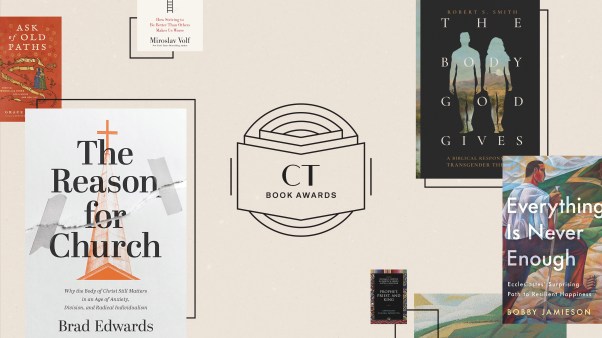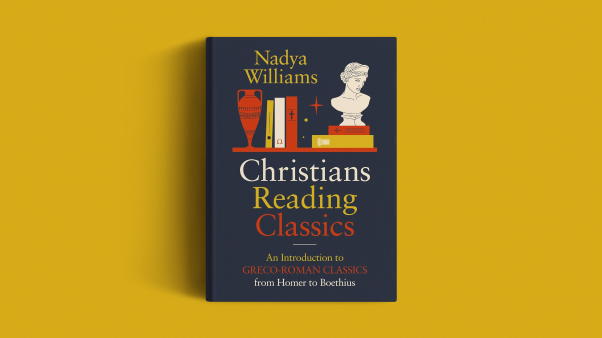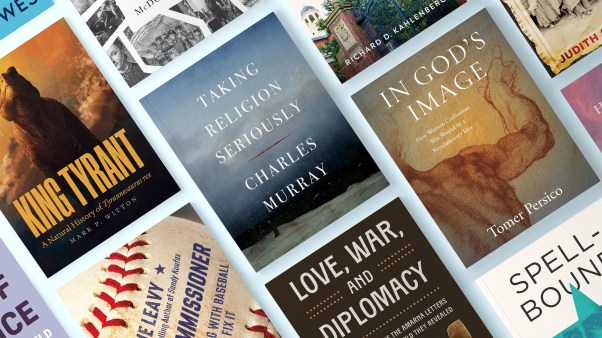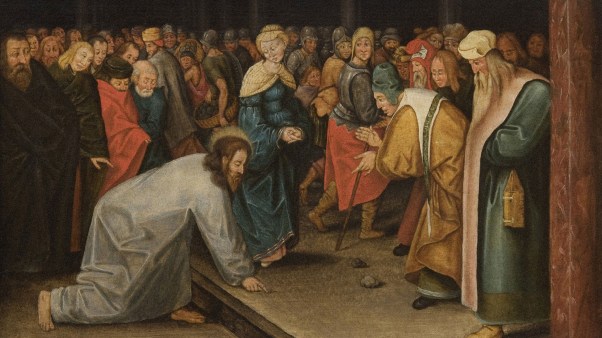For parents of school-aged children, it’s finally sinking in: This will be a long COVID winter. We’re already eleven months into isolation, which feels like the previous winter never really ended. We simply went from bundling up our kids before they played in the yard to slathering them with sunscreen (for the same yard) to bundling up again. And our hearts sink every time they wander back indoors. What to do next?
In both our families, the answer is always books. Not only does an author reside in each household; in addition, Erin runs an elementary school library, and Sarah helps plan literary conferences. Plus, both of us are preliminary judges for the annual CT Book Awards: Erin in the Children and Youth category, Sarah for Fiction. We unabashedly consider writers to be essential workers.
Data supports this. The more books a child accesses at home, the higher the test scores in every subject. Students, particularly those in impoverished areas, often only have access to books through their school and classroom libraries. Public library closures have only amplified the reading deficit. And yet literally every book you bring into a child’s home contributes to that child’s flourishing, more so than parents’ education, occupation, or wealth.
Why? Reading (especially reading aloud) builds academic habits and executive-function skills (paying attention, emotional regulation, working memory, and so on). In addition, written stories expose children to vocabulary, information, and a theory of mind (“others think differently than I do”), as Meghan Cox Gurdon argues in The Enchanted Hour: The Miraculous Power of Reading Aloud in the Age of Distraction. Literary fiction, in particular, has been shown to increase the capacity for empathy.
Sure, words on paper won’t magically create more curious, more compassionate humans, which is why we also encourage nurturing conversations: What made that character act that way? What do you have in common with that character? How are you different? What do you wonder?
So we read and discuss good books with children, pandemic or no pandemic. Observing the effects of sheltering in place on our own kids has only intensified our conviction that books are the gateway to, well, everything. But how do we find books that are, you know, good? And who gets to define that anyway?
Defining “Good” Books
When you’ve read more than a handful of kids’ books, you begin to realize what makes for a good one. For starters, grownups and children both dig it. As Madeleine L’Engle, Newbery-winning author of A Wrinkle in Time, famously wrote in her book Walking on Water: Reflections on Faith and Art, “if a book is not good enough for a grownup, it is not good enough for a child”—a concept which C. S. Lewis, author of The Chronicles of Narnia, also embraced a generation earlier: “A children’s story which is enjoyed only by children is a bad children’s story. The good ones last.” This is intuitive, right? Except when some “must read” book is boring you or the kids to tears. Trust us: When you and your child find a book that momentarily makes both of you forget about all the quotidian sounds from the next room, you’ll know you’ve hit upon a winner.
A good book likewise points to a moral vision, some semblance of truth. Matthew Paul Turner’s When God Made the World and its accompanying illustrations by Gillian Gamble inspire awe beyond a mere chronological retelling. We readers recognize wisdom in the generous grandmother from Oge Mora’s Thank You, Omu! and loyalty in the friends from Meg Medina’s Evelyn Del Rey Is Moving Away. We’re compelled to be better versions of ourselves, and that’s good too.
A good book also deserves discussion. What makes the apartment dwellers assume the new tenants are terrible and dirty in Sarah McIntyre’s The New Neighbors? Rita L. Hubbard’s The Oldest Student: How Mary Walker Learned to Read brings up a conversation about fairness that isn’t didactic.
Good isn’t necessarily synonymous with “classic,” either. This is often evident when it comes to matters like race. Whatever the virtues of well-known works like the Little House on the Prairie and The Indian in the Cupboard series, parents might have good reason to look elsewhere for books that push their children to think harder and better about the realities of human difference and privilege. Jerry Craft’s New Kid and Class Act, on the other hand, are only getting started in shaping valuable conversations. The companion graphic novels (the first of which won the 2020 Newbery Medal) are both relevant and astute in their social observations.
Theologically speaking, good doesn’t mean “safe” or “clean,” or else we’d swiftly remove every Bible from our shelves (we wouldn’t want our unsuspecting fourth graders to stumble upon, say, the Book of Judges!). Likewise, “good” doesn’t mean only those works written by Christian authors or produced by Christian publishers. To paraphrase L’Engle again, when it comes to distributing talent or spiritual insight, God is no respecter of persons. If a painter paints a sunset, the work of art either succeeds or fails according to the skills and craft required—regardless of whether the artist is an atheist or believer.
Being people of faith doesn’t give us a pass from reading widely and well. Nor does it allow us to settle for reading only those books that simply shore up what we already believe. Even the apostle Paul, when conversing with the Athenian intellectuals in Acts 17, quotes their own poets back to them—which means he was familiar with at least some of their literature.
Reading widely is especially crucial during a global pandemic, when nearly every community around the world is experiencing some version of the same isolating crisis. For communities that regularly sit on the edge of collapse, the stakes are much higher—but we may fail to see those communities the way God does without a window into their perspective. Literature opens the shutters, raises the blinds.
Meanwhile, when the fear of the unknown hovers over every minute of every day, books that offer simplistic solutions to complex suffering, or that employ emotional shortcuts through sentimental tropes, do our children a disservice. No, everything will not suddenly, magically improve if only you “believe in yourself.” Rather, Jesus knows what it’s like to suffer. Our children can experience the God who is with them in the darkness, in the valley. Books that walk alongside them through very real fear and danger can give them a more robust understanding of who God is and a deeper trust that they’re not alone.
Filling the Shelves
Which books would we have you read, then? Which of these good, “instirring” reads (to quote a malapropism by Sarah’s eldest) would we have you look for?
When young readers wonder where God is during difficult times or when they have big questions, we recommend the 2020 CT Book Award-winning Far From Home: A Story of Loss, Refuge, and Hope by Sarah Parker Rubio, beautifully illustrated by Fátima Anaya. The Arthurs’ second grader adores Benjamin Schipper’s fun illustrations in Jennifer Grant’s Maybe God is Like That Too and Maybe I Can Love My Neighbor Too.
For themes of perseverance and community, pick up 2020 Caldecott Award–winning, Newbery honoree The Undefeated, by Kwame Alexander and Kadir Nelson. Erin’s library classes are always astounded by the power of a group of kids in Let the Children March by Monica Clark-Robinson and Frank Morrison (a Coretta Scott King Award–winning book). The early elementary set is also primed to be impressed with God’s world, so Erin presents them with books that make them say, “Wow!”—books like Who Am I? A Peek-Through-Pages Book of Endangered Animals, by Tim Flach, as well as Teruyuki Komiya’s Life-Size Animals series.
Reading books in a series can prolong a relationship with characters and themes. Start with The Vanderbeekers series by Karina Yan Glaser. The books are on the right side of saccharine; the family is a happy one with relatable problems. A must for middle-grade books (ages 8-12): The kids are empowered to solve these problems. (Another with strong characters is Victoria Jamieson and Omar Mohamed’s graphic novel, When Stars Are Scattered.)
For middle-grade readers and up, Sarah suggests Stories of the Saints: Bold and Inspiring Tales of Adventure, Grace, and Courage, elegantly crafted by Carey Wallace with engrossing, graphic novel–like illustrations by Nick Thornborrow. For slightly older readers (including teens and adults), Daniel Nayeri’s award-winning autobiographical novel Everything Sad is Untrue (a true story) masterfully narrates Daniel’s childhood flight from Iran to Italy to Oklahoma after his mother converts to Christianity. (Spoiler alert: Things are not easier in the land of the free.) Neither of these books sanitizes the difficult path that people of faith, including children (and especially survivors), often tread. While unsettling, like Grimms’ Fairy Tales and The Arabian Nights, these stories resound with hope, joy, and resilience.
For fans of YA (young adult) literature, Erin suggests anything written by Court Stevens; start with Dress Codes for Small Towns and the 2020 release, The June Boys. Stevens writes about belonging, sexuality, and identity—and, even better, characters’ families and faith relationships that are complex but functional, honest and not dismissive. For further reads about identity, nab Mitali Perkins’s books, including You Bring the Distant Near.
Sarah’s recent YA favorites include Sara Zarr’s Goodbye from Nowhere, which features an older teen who’s slowly losing all the everyday things he’s taken for granted (his parents’ marriage, a great girlfriend, his grandparents’ homestead), forcing him to recalibrate his sense of belonging. Ordinary Hazards: A Memoir, by bestselling author Nikki Grimes, is a collection of free-verse poems that follows Grimes’s childhood journey through her mother’s mental illness, her father’s absence, and being separated from her beloved sister in the foster care system. Despite the darkness, these books hint at—and sometimes even shimmer with—the presence of a God who never leaves us nor forsakes us.
At the end of this COVID winter, we pray things will be different for children everywhere. In the meantime, words on a page can transform imaginations and offer insights to experiences, people, and places beyond our front doors. The longer those doors stay closed to the outside world, the more insular we risk becoming. So if ever there were a time to read aloud or give our children a good book, it’s now. May this time of cloistering at home fuel a broadening of their horizons and a deepening of their faith through the narratives they encounter.
Sarah Arthur and Erin F. Wasinger are co-authors of The Year of Small Things: Radical Faith for the Rest of Us.









